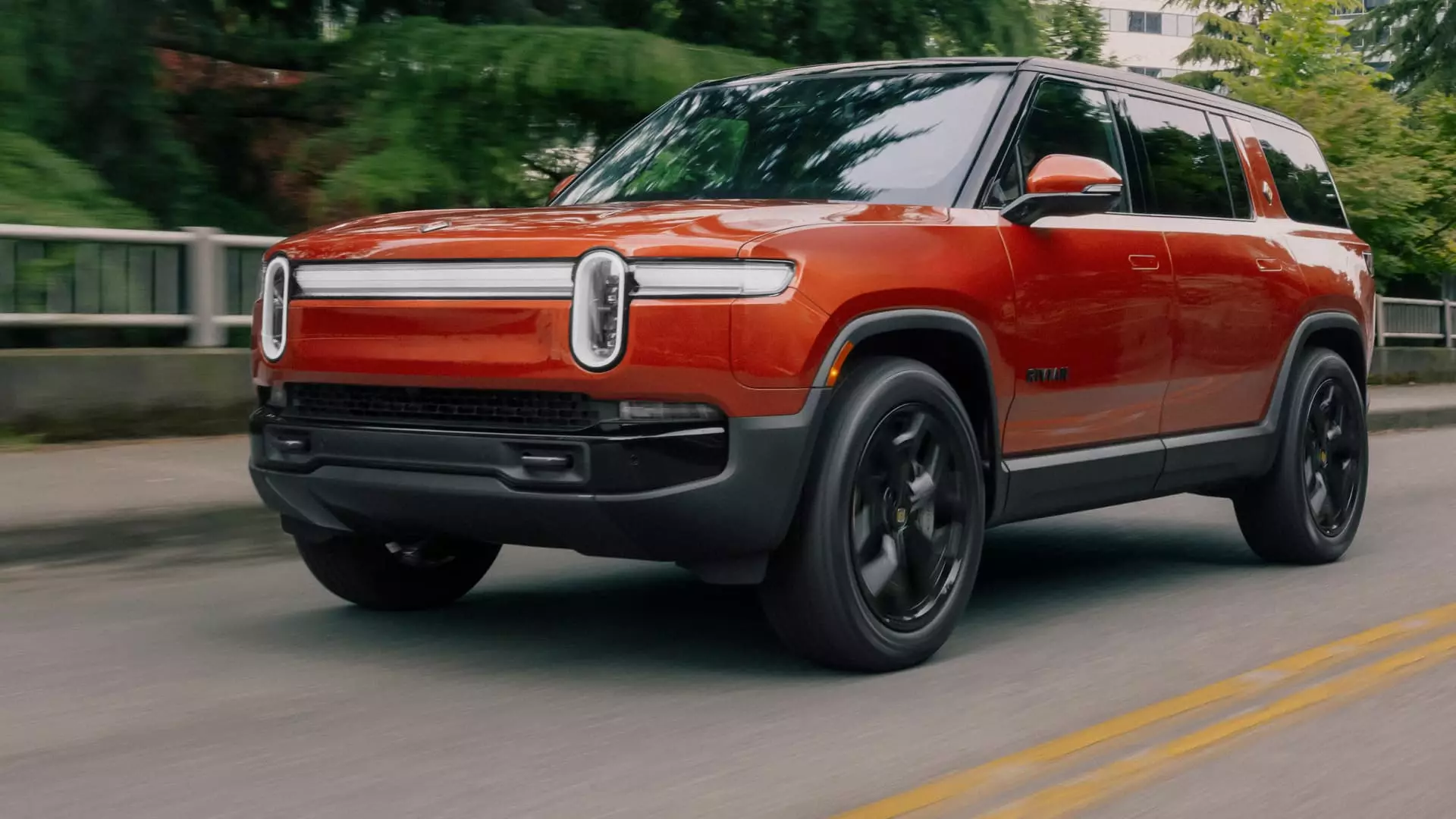Rivian Automotive’s Resilient Earnings Amidst Challenges: A Closer Examination

Rivian Automotive has recently reported fourth-quarter results that have surpassed Wall Street’s earnings expectations, making a significant mark in an industry that is constantly fluctuating. The company announced a gross profit of $170 million, marking its first successful quarter in terms of gross profitability—a milestone that investors have closely monitored. However, the outlook for 2025 appears less optimistic, prompting a deeper analysis of the factors influencing Rivian’s performance and future trajectory.
While the headline achievement of a gross quarterly profit is commendable, it is essential to consider the broader context. Rivian’s earnings report shows adjusted losses narrowing down from $2.69 billion in 2024 to a projected range of $1.7 billion to $1.9 billion in 2025. The expectation of delivering between 46,000 to 51,000 units, slightly lower than the previous year’s output of 51,579 vehicles, raises questions about the company’s growth prospects in an increasingly competitive market.
Following the announcement, Rivian’s stock initially surged by approximately 7% in after-hours trading, a testament to investor optimism. Yet, the excitement was tempered as the stock subsequently closed at $13.61 per share, reflecting a 2.3% dip. This volatility underscores the uncertainty that investors face when evaluating the long-term viability of electric vehicle manufacturers, especially as concerns about profitability linger.
CEO RJ Scaringe articulated the apprehensions surrounding Rivian’s future, emphasizing the unpredictable variables in the automotive landscape, including potential federal incentives for electric vehicles and the impact of tariff policies. This cautious stance echoed through the company’s shareholder letter, which highlighted the importance of navigating external challenges while remaining steadfast in their long-term electric vehicle vision.
Rivian acknowledges the uncertainty introduced by evolving government policies and market demand, suggesting that these external pressures could significantly shift their 2025 expectations. The CFO, Claire McDonough, mentioned that the company has anticipated “hundreds of millions” of dollars in EBITDA impacts stemming from reduced sales projections linked to possible tax credit eliminations. This foresight reflects Rivian’s strategic approach to forecasting and budgeting in a volatile environment.
In addition to financial fluctuations, Rivian’s anticipated capital expenditures ranging from $1.6 billion to $1.7 billion highlight the ongoing investments in expanding production capabilities and product lines. Notably, the company plans to idle its manufacturing facility in Normal, Illinois, in the latter half of the year as it gears up for its new “R2” midsize models set to launch in 2026. Executives believe that these new vehicles could be transformative for Rivian’s growth and profitability, illustrating a forward-looking strategy amidst present uncertainties.
Rivian’s revenues during the fourth quarter benefitted from various streams, including $299 million from regulatory credit sales and $214 million from its software and services sector. Selling regulatory credits has allowed Rivian to bolster its financial performance, but it remains vulnerable to changes in regulatory frameworks, especially under different government administrations. As businesses anticipate changes in environmental policies, Rivian’s reliance on such credits could become a double-edged sword.
The net loss of $743 million in Q4 stands in stark contrast to the $1.52 billion loss a year earlier and showcases a significant improvement. Nevertheless, the full-year net loss of $4.75 billion indicates that challenges persist. The increase in revenue from $4.43 billion in 2023 to $4.97 billion in 2024 does exhibit progress, particularly a remarkable 31% rise in quarterly revenue across the year.
As Rivian Automotive makes strides in achieving profitability milestones, it remains essential for stakeholders to stay aware of the complexities surrounding its operations. The automotive industry is undergoing transformative changes, especially with the electric vehicle sector facing myriad challenges and opportunities. Rivian’s ability to adapt, coupled with its strategic investments and product innovations, may dictate its long-term success. Investors should maintain a nuanced perspective, recognizing both the achievements and the hurdles that lie ahead as Rivian continues to navigate this dynamic landscape.





